
Before you hop on that flight to Japan, there are some things you should know. This country has a complex culture, and there are definitely some manners and norms you should be aware of.
There are so some Japan-isms that will leave you scratching your head like, what are all those buttons for on Japanese toilets anyway?!
Dont worry, well give you the scoop in this article!
Weve rounded up some things to know before your trip to Japan from tips thatll come in super handy during your travels to fun facts that will blow you away youll definitely come away from this article with some new Japan knowledge under your belt.
Helpful tips for traveling to Japan:
These are tips and useful info that will actually help you along your Japan trip.
1. There are few trash cans on the street
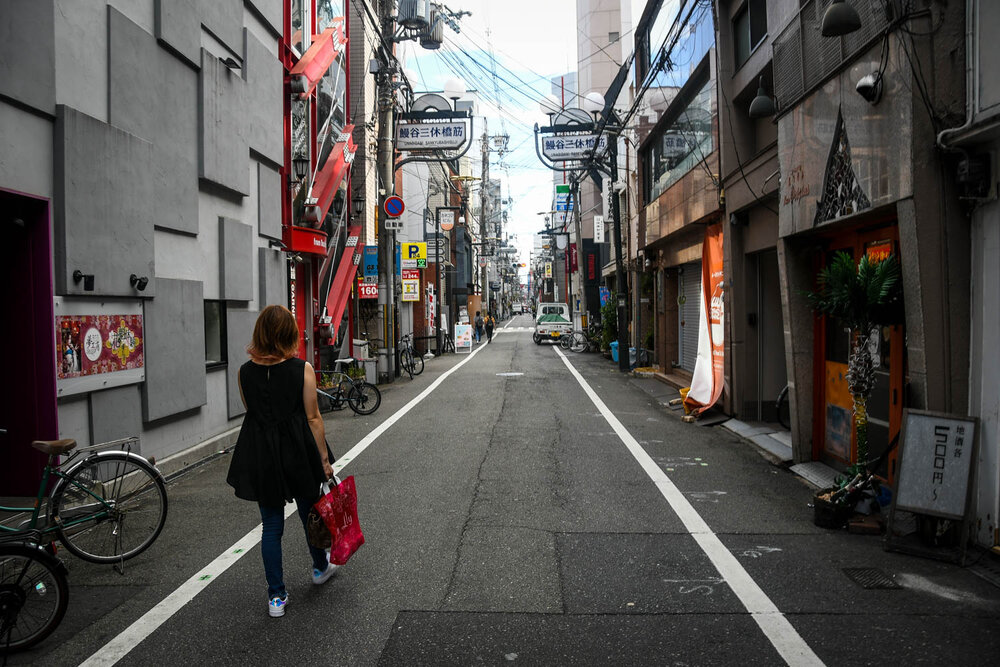
After hearing this, you might be surprised to learn that even though there is a shortage of garbage bins, there is very little litter in Japan.
Cleanliness is a big part of Japanese culture, which is reflected in the (mostly) litter-free streets.
So do as the Japanese do, and hold onto any wrappers until you find a bin. There are typically trash cans at convenience stores, meant for customers to dispose of their garbage.
2. Avoiding plastic waste takes work

On the surface, Japan seems to be environmentally conscious: there are recycling bins every so often and the streets are very clean. But as soon as you stop into a convenience store, youll notice that this country, like much of Asia, relies heavily on plastic packaging. And the super unnecessary kind, like plastic wrappers around single bananas.
As a traveler, theres not too much you can do to change this, but you can reduce your own waste by packing items thatll help you turn down single-use plastic items.
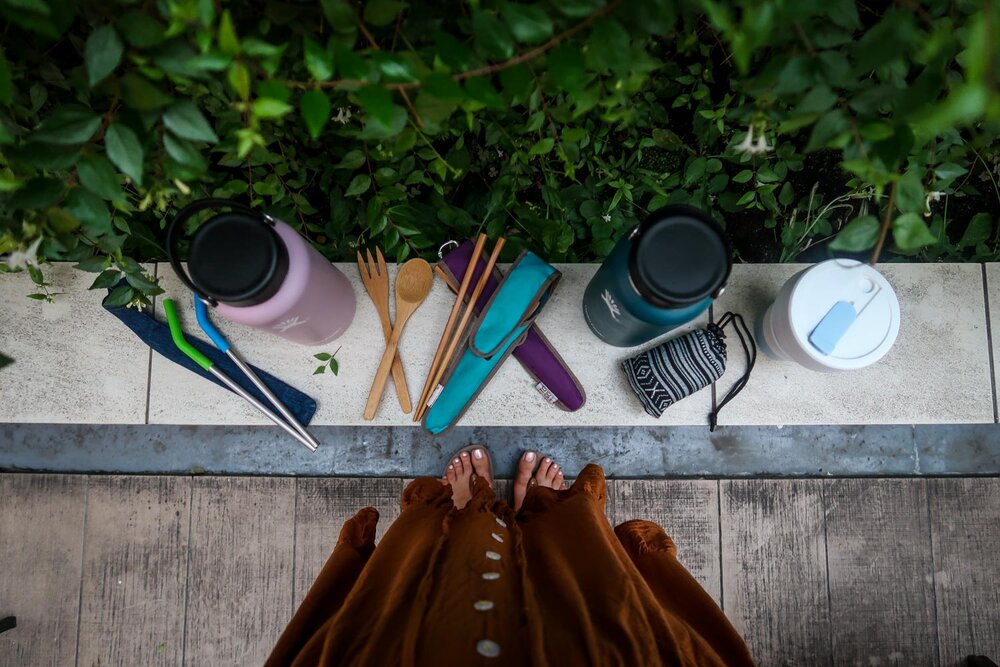
Here are some items wed recommend packing:
*Yes, you can fill up from the tap and drink the water in Japan!
Theres an app called MyMizu that has a map of refill stations (mostly in larger cities, but Im sure theyre expanding it as data is available).
Check out our eco friendly packing list for some more ideas!
3. There is a language barrier, but
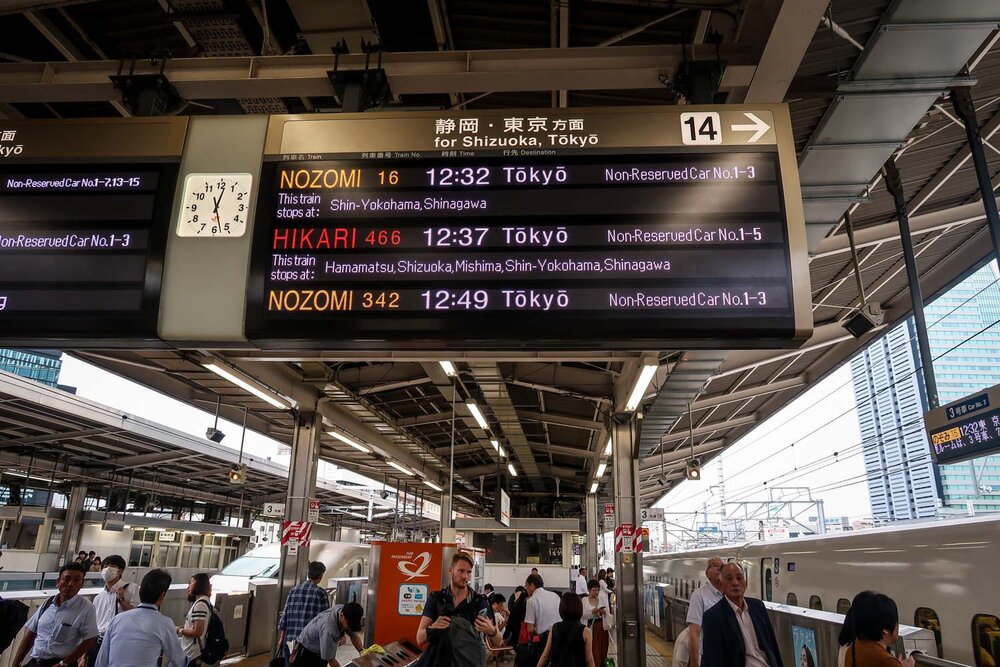
you shouldnt be too worried about it!
One of the things we get the most questions on is the language barrier in Japan. And after reading guide books and articles online, it can seem like traveling in Japan without speaking Japanese is impossible. But thats far from the truth.
Honestly, we didnt feel like the language barrier was too bad. (That said, weve spent a cumulative 3+ years living in and traveling through Asia, so we are used to language barriers.)
This should put you at ease:
-
All major signage in train stations is in Japanese and English
In the event that you have a question, go to the JR counter and speak to an employee. They should have a translation device, which will help in the event that they arent confident with their English skills.
Often times restaurants have English menus (some even have pictures!)
Hotel staff usually speak a bit of English
At most restaurants there is at least one staff member who will be able to communicate with English speakers
Oh, and the Google Translate app is literally the BEST THING EVER. Read about more apps we recommend downloading for your trip to Japan!
Japanese people, in general, are very polite and kind. While they may not approach you, if you ask for help they will usually do their best to assist you or point you in the direction of someone who can help.
Learn a few words in Japanese, as it will show you're trying. And be patient. Remember, you are a guest in another country, and while some people may know a bit of English, it is not their first language.
Some helpful words & phrases in Japanese:
HELLO: Konnichiwa (also means good afternoon)
GOOD MORNING: Ohay gozaimasu
THANK YOU: Arigato gozaimasu (the u on the end of the word is almost silent)
EXCUSE ME: Sumimasen
CHEERS!: Kanpai!
DELICIOUS: Oish
If you take one thing away from this point, I hope that its this:
There will be a language barrier while traveling in Japan, and you cant expect people to speak English. BUT, it is definitely possible to communicate with simple vocab words, the Google Translate app, and a bit of patience.
4. There is more to Japanese cuisine than sushi and ramen
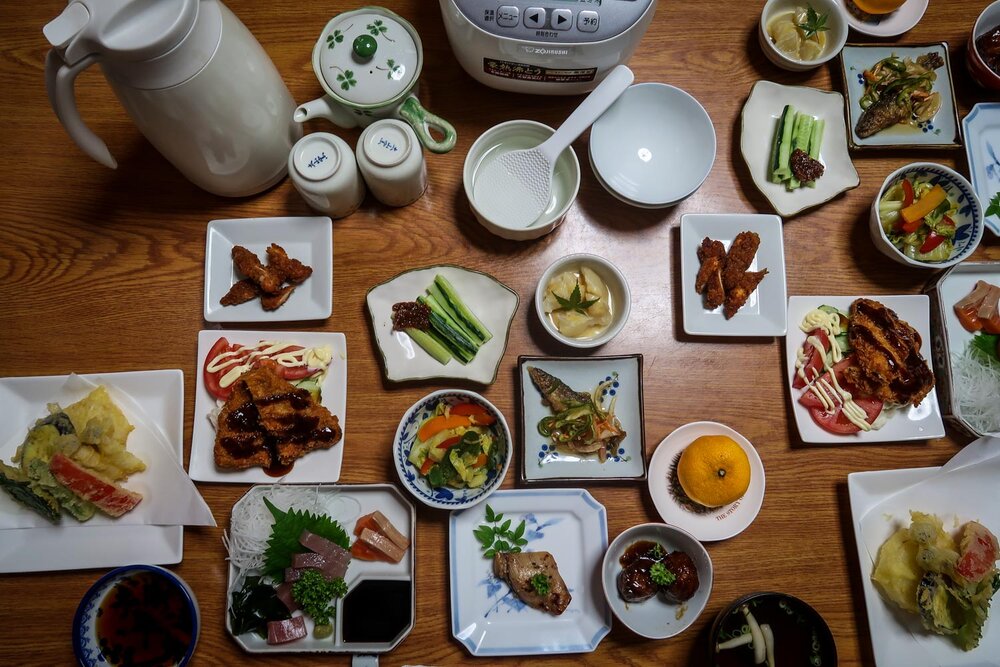
Before our first trip to Japan, our knowledge of Japanese cuisine started and ended with sushi and ramen. We didnt know much else about it. But were here to tell you there is SO much more to this cuisine.
Check out our guide to the best foods to try in Japan, which even has a checklist you can download so you can make sure you dont miss any foods! The more you know before your trip, the more youll be able to try.
5. Vending machines
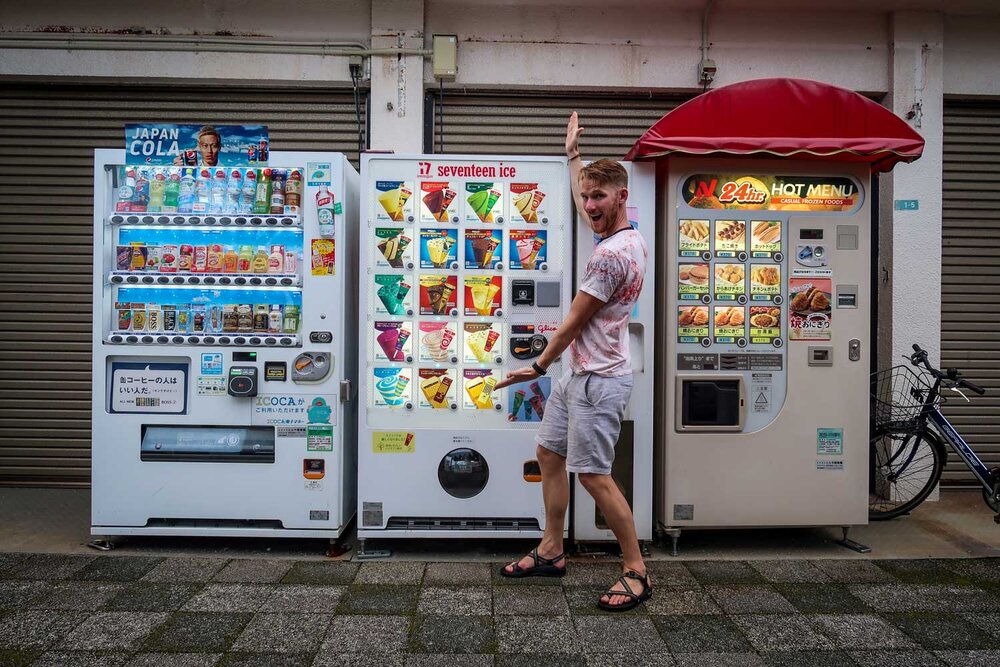
Youll see vending machines EVERYWHERE. We even bought an iced coffee from a vending machine on a street corner in very remote towns on our Kumano Kodo trek, where the population couldnt have been more than a couple hundred people.
And in the big cities, like Tokyo and Osaka, youll find vending machines on just about every city block, selling anything from the ordinary sports drinks, coffees and snacks to the unusual electronics, small toys, and DVDs.
There are even rumors of used underwear vending machines we never saw them (or even looked for them!), but theres no doubt youll see quite the variety of vending machines in Japan.
Interesting to know: One Japanese man explained to us that seeing all the vending machines is proof that Japan is very safe. If it were unsafe, theres a good chance theyd be broken into.
6. Manners are a big deal
Etiquette is important in Japan, and its a good idea to read up on some Japanese manners before your trip so you dont embarrass yourself or offend someone.
Here are a few manners to keep in mind:
Instead of pointing with one finger, use your entire hand.
Avoid physical touch, like hugging, until you know if someone is comfortable with it. Also, public PDA is kind of a no-no.
Dont eat while walking.
Be quiet on public transportation and avoid taking phone calls if possible.
Related: Weve compiled some important manners to keep in mind while eating and Japan train etiquette.
7. Dont tip
While it is a common practice in North America, Europe and many other part of the world, tipping is not part of Japanese culture and can be seen as mildly rude in some instances. The Japanese believe that good service is expected (whether it be at a restaurant or tour) so there is no need to add extra money in the form of a tip.
Try to show your appreciation for a meal or tour by verbally thanking the staff, cook or guide. Leaving a review is always helpful so other travelers know what to expect.
8. Forks are few and far between
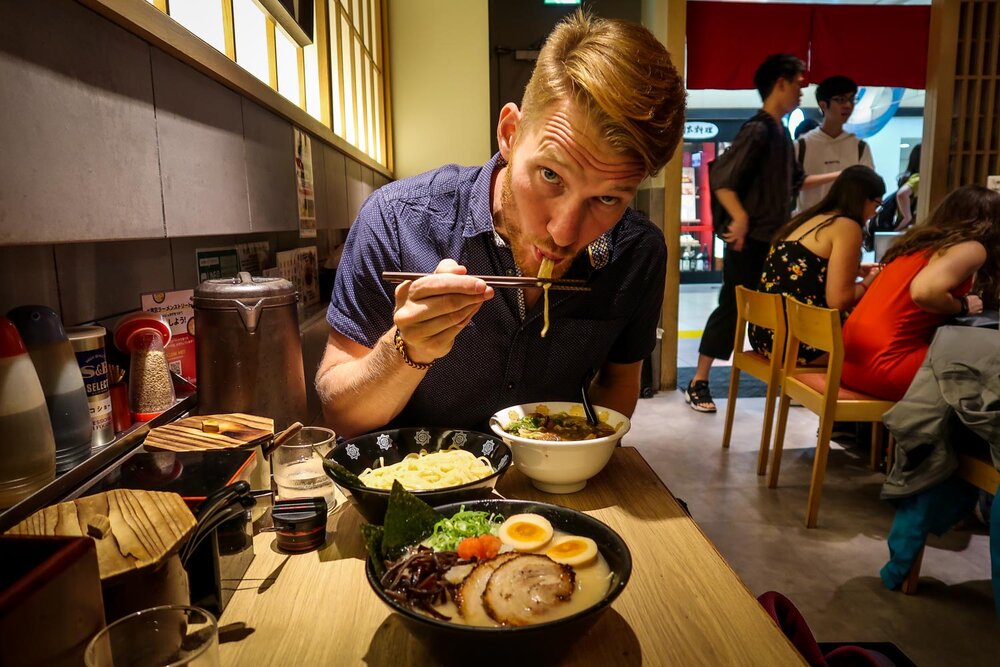
Youll want to practice your chopstick skills before your trip to Japan because it is the utensil of choice, and very rarely will you find forks.
Hint: Chopsticks also make a great souvenir from Japan!
9. Japan is not as expensive as you might think
Weve traveled extensively around Asia, and its true Japan is one of the more expensive places weve visited in this region of the world. That said, it is still possible to travel Japan cheaply.
You can find budget accommodation in hostels, capsule hotels, or even Airbnbs. You can save money on food by eating at convenience stores, cooking some meals yourself, and planning out splurge meals. Cut transportation costs by getting the JR Pass, and enjoy all sorts of free things to do around the country.
Traveling to Japan doesnt have to be crazy expensive. Weve rounded up some of our top tips for traveling to Japan on a budget.
Moral of the story: If Japan is a country youve been dreaming of visiting, dont let costs inhibit or deter you from making your dream a reality!
Related: Weve got tons of super practical tips to show you how we afford to travel!
10. Be careful with coins

Some of those yen coins are worth almost $5 USD! I dont know about you, but I typically throw coins around without much care I mean, its no big deal if I misplace 12 cents But in Japan, losing a handful of coins could add up to big money.
While on a train, a bunch of coins fell out of Bens pocket and we had to get down on our hands and knees to find them all before our stop. When we counted them all up we realized we nearly lost $24 USD in coins. Yikes!
When traveling in Japan its a good idea to have a coin case to keep them secure.
Tip: We met another traveler who had two coin purses one for the large coins and one for the small ones to keep them organized.
11. Youll want cash AND credit cards
Many places in Japan accept foreign credit cards with now problem. And if you have one with no foreign transaction fees that earns good rewards, youll definitely want to bring it along and use it as much as possible.
That said, there are still small shops, restaurants, and even guesthouses that only accept cash, so youll definitely want to have some Japanese yen on hand.
Insider Tip: We always get foreign currency by withdrawing from ATMs, as it gives you the best exchange rate. To avoid those pesky ATM fees, we use our Charles Schwab debit card, which reimburses all ATM fees at the end of each month. It is the BEST card ever!
12. Japan is safe
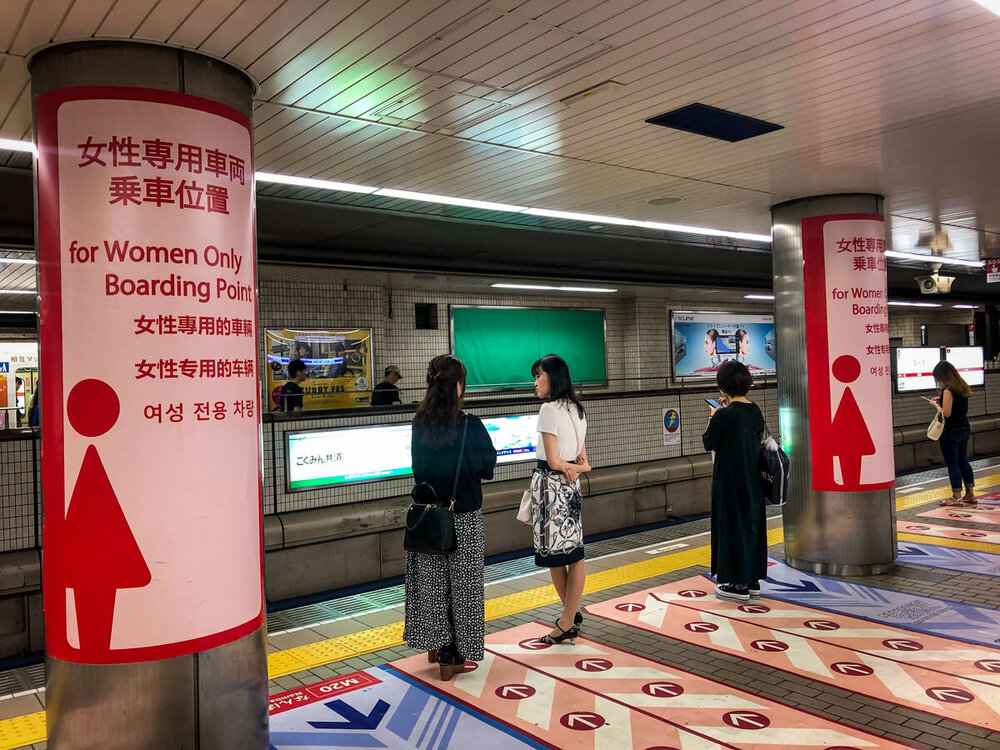
Fun Facts about Japan: Women Only Subway Cars
Like, very safe. Of course, youll still want to use common sense on your travels in Japan, but the chances of you encountering any dangerous situations or theft are very slim.
Weve known people who have left their wallet on a crowded subway in Tokyo, only to have it hand-returned to them hours later. The thing we had to get used to was being mindful of our belongings when we returned to the US after our trip to Japan!
Related: Here are some essential travel safety tips you should know before any travels!
13. Getting a Japan Rail Pass is probably a good idea
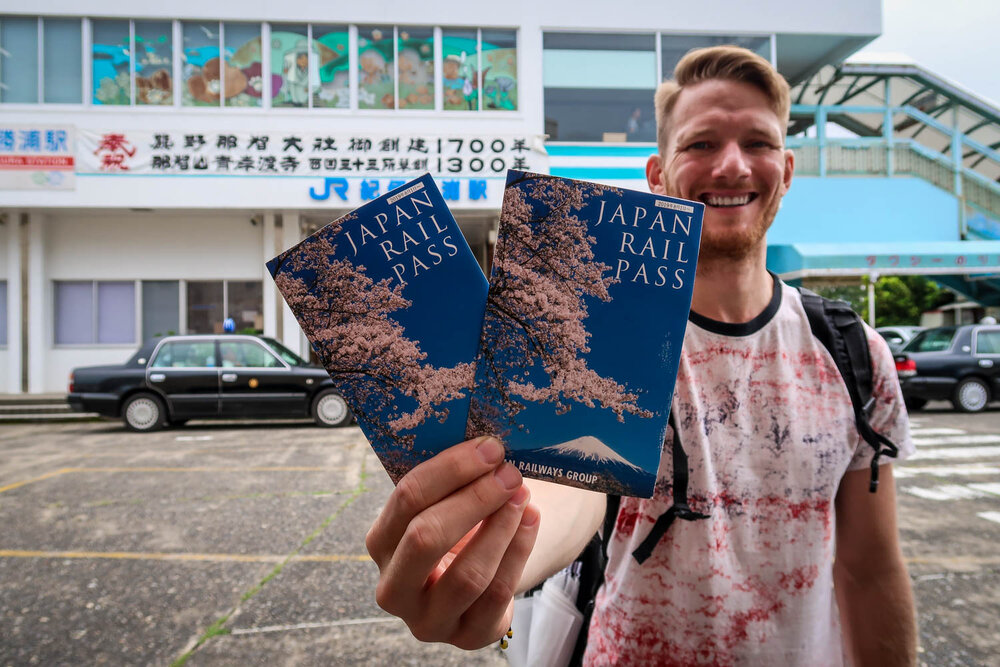
Essentially, if you plan to visit more than 2 cities during your trip to Japan, the JR Pass will save you money.
We have a whole article detailing it and even a quick way to calculate whether or not it will be worth it for you but chances are it WILL.
Good to know: A JR Pass is essentially the same price as a roundtrip ticket from Tokyo to Osaka. So many travelers in Japan will save lots of money by getting the pass. Also, we didnt know this until we were in Japan, but Japanese citizens actually cannot get this pass, and therefore pay a lot more than most tourists for train travel.

14. Book your major train routes ahead of time
Many popular routes get fully booked up, so dont wait until the last minute to reserve seats. For example, we had to stand for the 1.5-hour ride from Hiroshima to Osaka because we didnt book our tickets in advance.
When you have the JR Pass, all train routes are free (there are a few lines that are not included, but you really dont have to worry about those). Wed recommend on your first day in Japan, to go to the JR ticket counter at the train station and reserve all your seats for your routes at once. You can always change your time and book another ticket later, but its good to have seats reserved.

If your route is fully booked, on every shinkansen train (bullet trains) there are a couple of cars that are for passengers that dont have reserved seat. However, there is a high chance that youll be standing for that ride.
15. There are lots of interesting hotel options
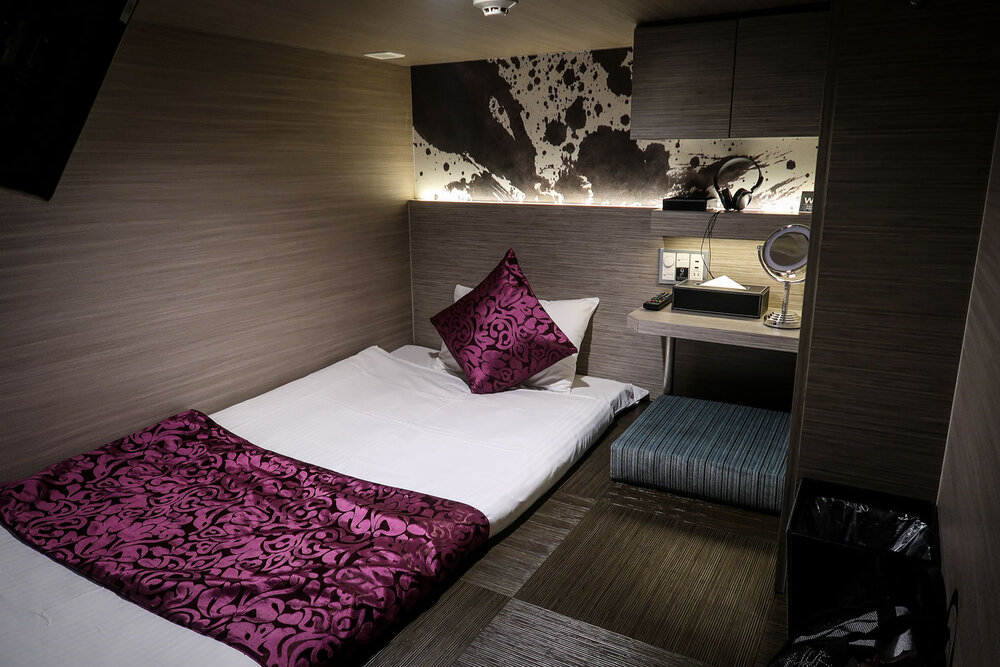
While traveling in Japan, you might want to try out a few unique hotel stays that you can find only in Japan.
Ryokan: This is a traditional Japanese inn that typically provides guests with robes and meals. There is often times a shared bathroom and onsite onsens that can be used by guests.
Capsule Hotel: Made to maximize space in crowded cities, capsule hotels provide guests with privacy and an affordable stay. However, dont expect to stand up in your pod! Staying in a capsule hotel is definitely a Japanese experience to try out on your trip!
Robot Hotel: There are even hotels run by robots! Like we said, #OnlyInJapan
16. Japan has 4 distinct seasons

Before booking your flight, be sure you actually understand what the weather in Japan will be like when youre there. This country has four very different seasons, and the climate varies quite a bit from north to south.
Winter: Temperatures can be mild to very cold, depending on where in the country youre traveling. Youll find snow in many parts of the country as well.
Spring: Comfortable temperatures and the famous cherry blossoms bring lots of travelers to Japan, making it one of the most crowded (yet beautiful!) times of the year.
Summer: This season is hot (like really hot!) and humid, rain and typhoons can be expected.
Autumn: Beautiful fall foliage and comfortable temperatures, early fall can see typhoons.
Related: Read more about Japans seasons and weather here.
17. Japan has excellent skiing
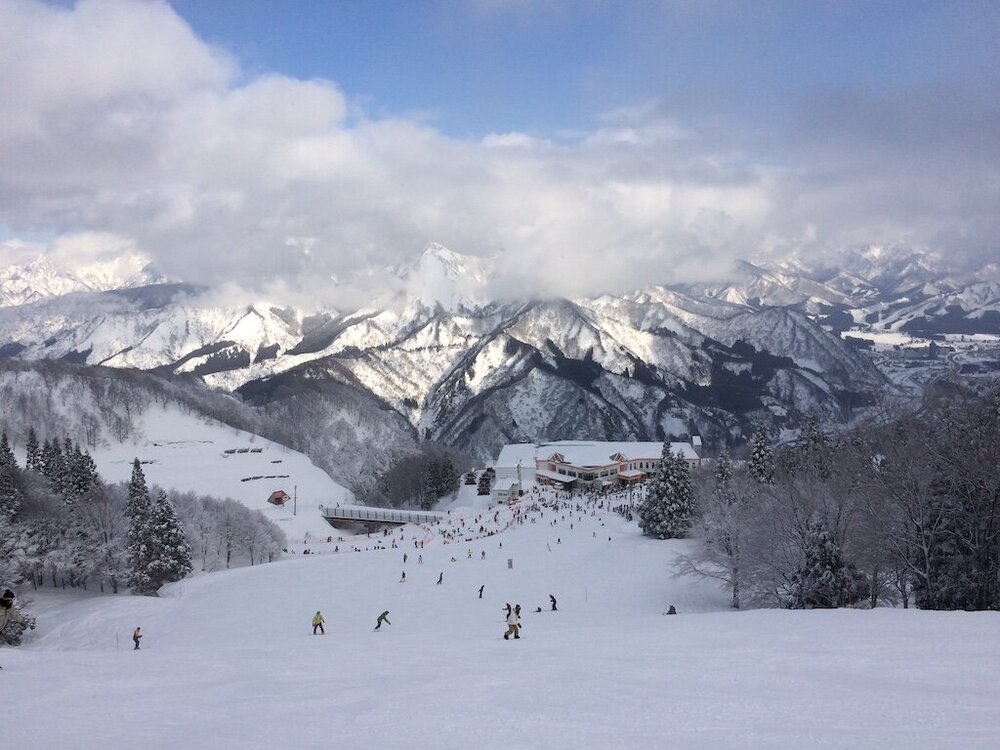
Gala Yuzawa Ski Resort (near Tokyo) // Photo credit: Lena Scheidler from Nagoya Foodie
Who knew?! Well, I suppose a lot of people, but I was not one of them.
Ben and I snowboard and even spent a winter season working at a ski resort, so we love us some good powder. And as it turns out, Japan has some of the best in the world!
If youre a snow bunny, you might want to plan your trip to Japan during the winter months so you can enjoy the world-class skiing!
18. Onsens are fantastic!
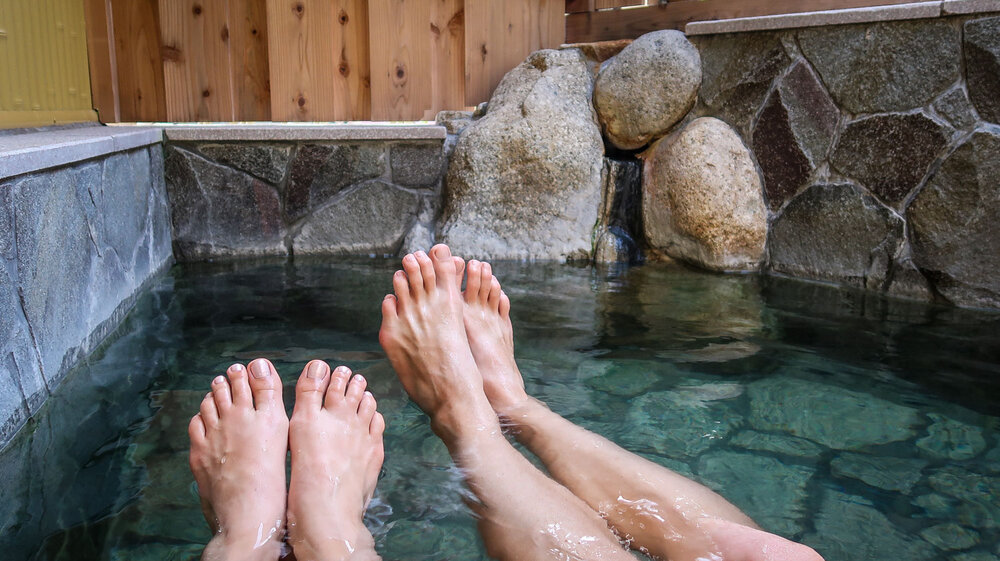
You should try one (or a few!) on your trip to Japan. Lets start by defining what is an onsen, exactly
Onsen: a Japanese hot spring with a bathing facility
Japan has a lot of volcanic activity, meaning there are onsens all around the country. Traditionally, onsens are separated by gender, and they are a staple in Japanese culture.
The most magical onsens are the outdoor ones with a view. But youll find all varieties. Similarly, sento are indoor bathing facilities that use ordinary heated water (not from geothermal activity).
Both onsens and sento are meant for communal bathing. I know what youre thinking: I have to get naked with strangers?!
My thoughts were the same. But after experiencing a jjimjilbang (which is essentially the Korean equivalent to an onsen or sento), I realized that nobody cares what you look like. Yes, seriously. It still may feel strange at first, but it is something youll get used to.
Basic Onsen Etiquette:
Shower before you get in, often times its at a sitting shower
Unless otherwise noted, do not wear a bathing suit
You can bring a towel into the bathing area, but dont let it touch the water (many people put it on top of their head)
If you have long hair, tie it up so it doesnt touch the water
Know if tattoos are allowed before you enter (many onsen do not allow guests with tattoos)
Alternative: For those of you who just cant get over the whole naked in public thing (I get it!), you may want to consider staying at a ryokan with a private onsen. This means you can reserve a time slot for yourself (and a travel partner if you wish).
19. These apps are HUGE lifesavers in Japan

We have a whole article detailing all the apps you should download for your trip to Japan, but the 2 best ones that you NEED to download are:
Japan Official Travel App
Google Translate
You will thank us because they will come in so handy during your trip!
20. Japanese Toilets are reallllly nice
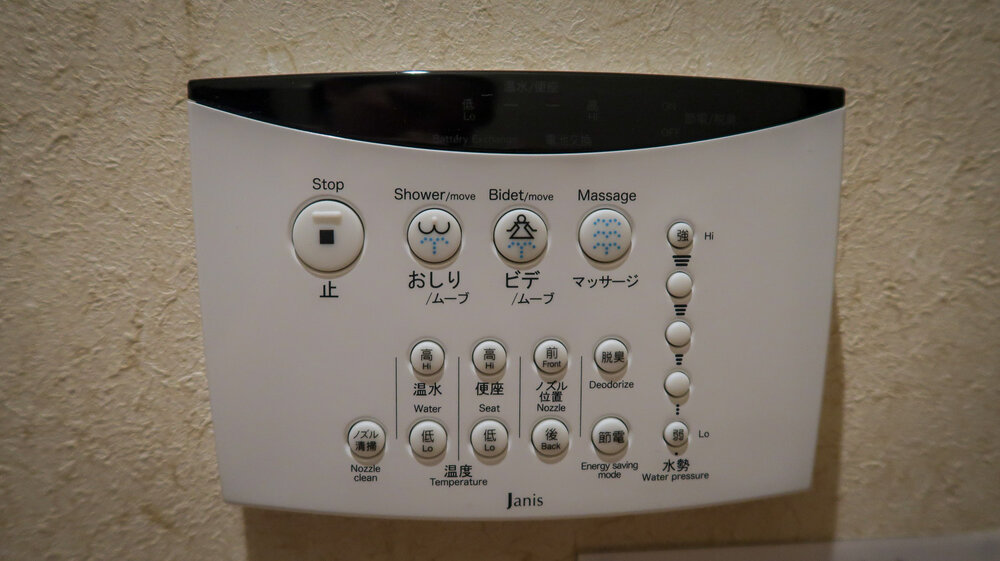
Youve probably heard about Japanese toilets, and what the rumors say is true!
There are all sorts of buttons that perform different functions. For example, one button may play waterfall sounds or music to cover up, ummm, some other sounds you may not want the person in the next stall to hear. Other buttons will trigger a bum wash and can be set at varying pressure strengths.
All those buttons can be a little intimidating at first, but try them out (locate the STOP button first) and take advantage of those fancy toilets while you can. Because you surely dont have those fun features at home!
21. Its difficult to be gluten-free in Japan
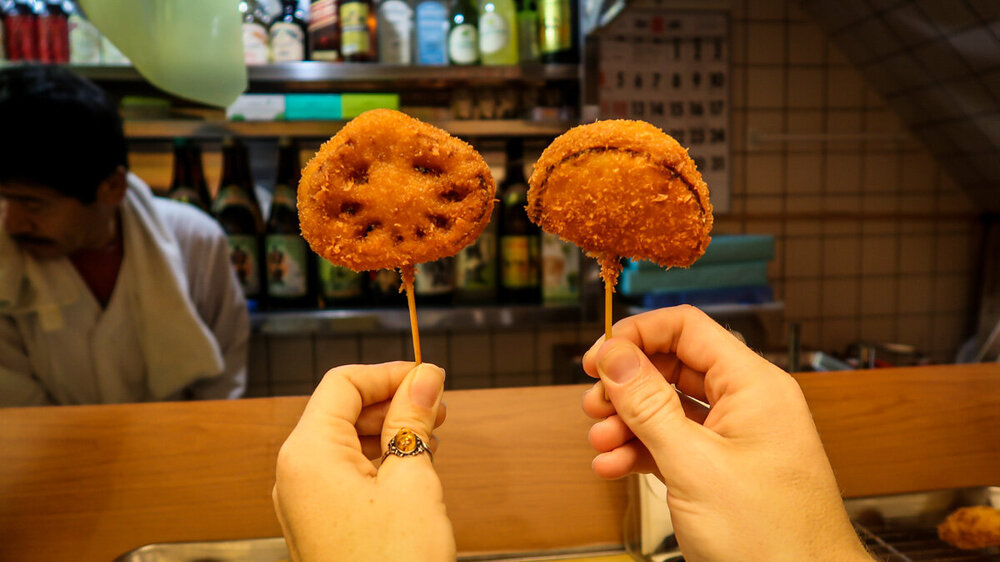
While the abundance of rice may make you think Japan would be an easy country for gluten-free travelers, thats simply not the case. Soy sauce and other wheat-based seasonings are an integral part of Japanese cuisine, making it hard to avoid gluten.
Click here for more info on gluten-free travel to Japan.
22. Everything in Japan is super punctual
In Japan, it is seen as rude to be late, and thus, everything in Japan is run very strictly according to the clock.
This means trains leave exactly as scheduled and guests are often asked to show up to guided tours 15 minutes in advance. If you have a tendency to be late (Im right there with ya!), be sure to pay extra careful attention to the time during your trip to Japan.
23. Coin lockers make things easy

Nearly every train station has lockers which you can use to store belongings for a reasonable price. There are usually different sizes available, so you can store anything from a purse or small daypack to a large suitcase.
This is handy when you need to check out of your hotel but want to spend the day exploring.
Insider Tip: If you have a suitcase that you dont want to bring with you on the train, there are luggage transport companies that can get it to your final destination for you!
24. Japan has an obsession with all things CUTE
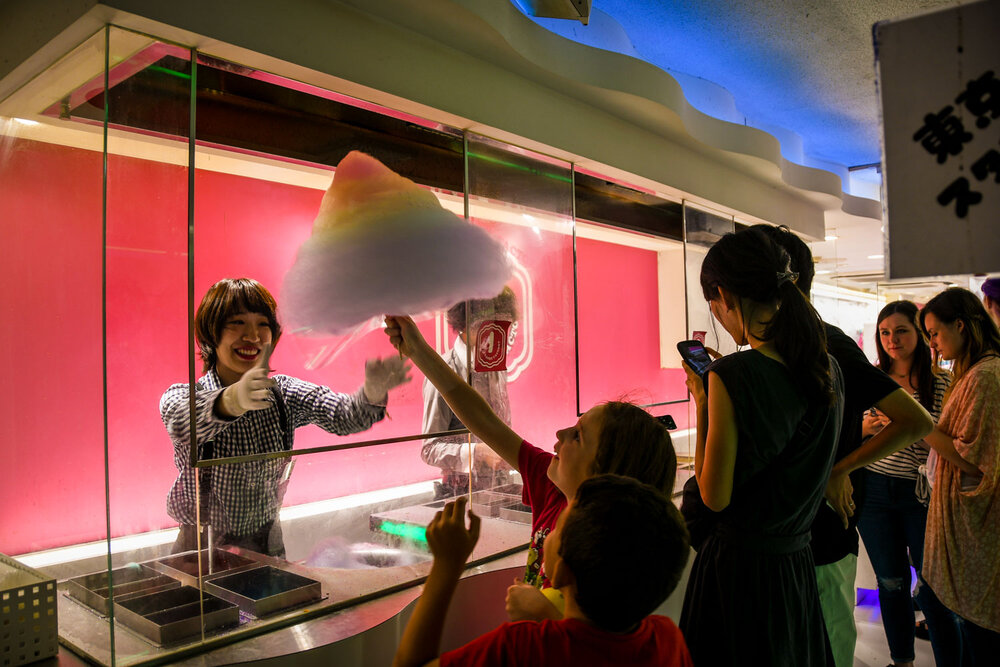
Kawaii is Japanese for cute, and there is an entire culture built around this concept.
Purikura: One way to partake in the kawaii culture is to hop inside a Japanese photo booth, or purikura. You will have the chance to cute-i-fy your picture by adding fun backgrounds, makeup, and stickers. Oh, and expect your eyes to be enlarged, your skin to look flawless, and you jawline shrunk so you look extra CUTE.
Harajuku: This neighborhood in Tokyo is the epicenter of all things kawaii. Youll see rainbow-themed foods, costumes, and super cutesy fashion. Definitely an interesting place to check out while in Tokyo.
Theme Cafes: There are all sorts of theme cafes, but that exemplifies the kawaii culture is the Kawaii Monster Cafe. Remember, youre not going for the food, but rather, for the experience.
25. Shrine vs. Temple
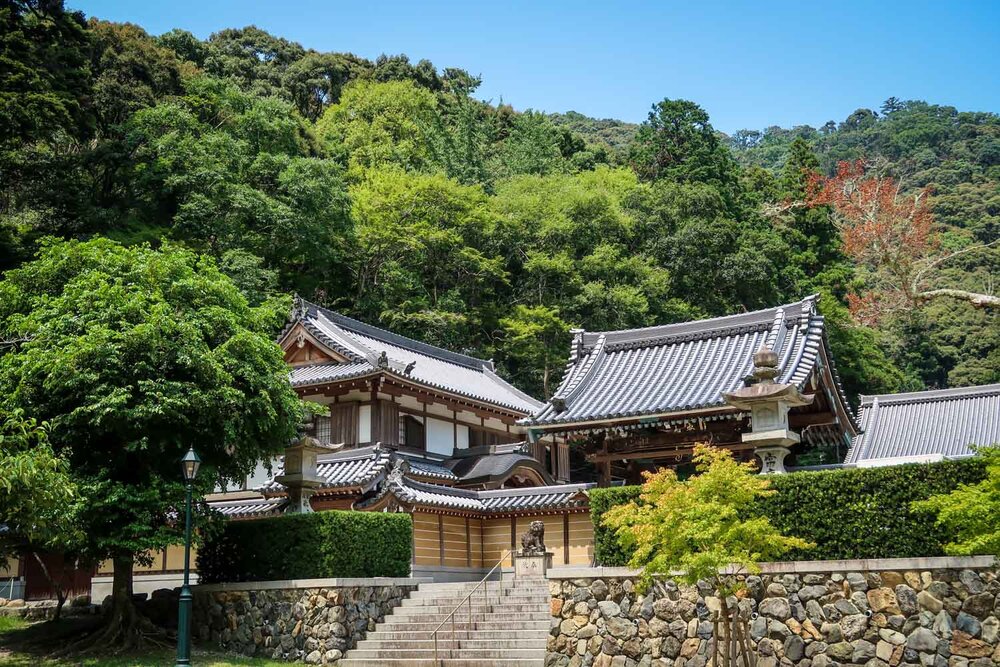
Before traveling to Japan, its very useful to know the difference between a shrine and a temple. Here is a general guide to help you:
Shinto Shrine:

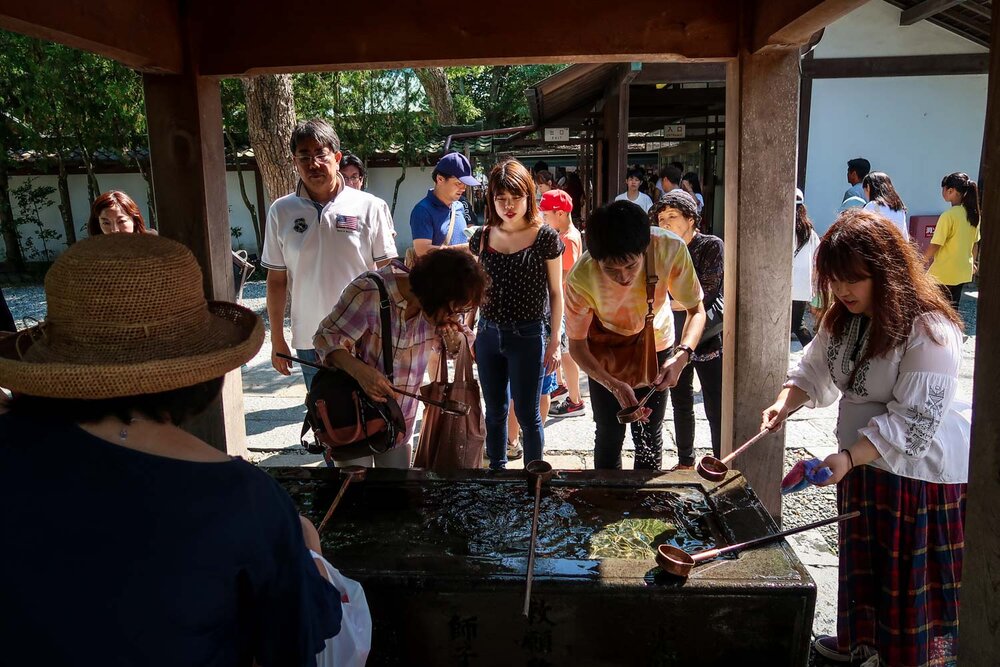
recognize them by the tori gates
purification fountain (called chozuya) with ladles
How to visit a Shinto Shrine in Japan:
There are two locations where you need to do something:
1. Chozuya, purification fountain
Bow slightly in front of the torii gate
Approach the chozuya (water basin covered with a roof)
Fill up a ladle with water using your right hand and rinse your left hand, and then your right hand.
Fill up a ladle with water using your right hand, pour water into your cupped left hand and bring the water to your lips and rinse your mouth. Dont put the ladle to your lips and dont spit back into the basin.
Lastly, lift the ladle vertically, letting the remaining water clean it for the next person.
2. At the Shrine (where you pray)
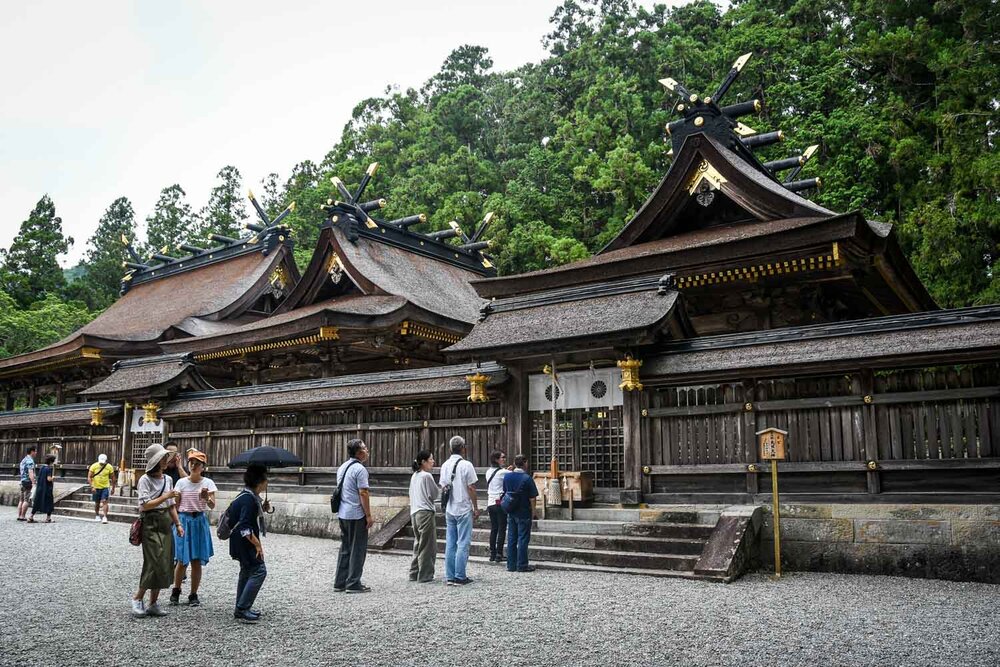
Bow slightly
Toss a coin in the box in front of you (small coins are okay)
Ring the bell (if there is one) two or three times to tell the gods you are here
Deeply bow twice
Clap twice
Say a little prayer, or pay you respects
Deeply bow once
Buddhist Temple:

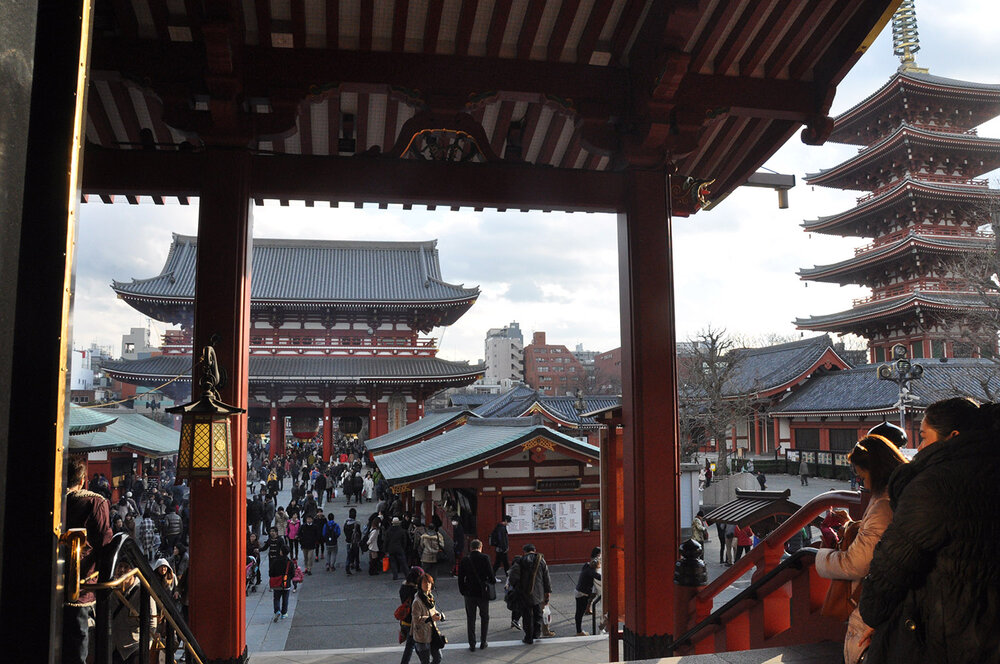
large incense burner
statues of Buddha
sometimes a graveyard is attached
How to visit a Buddhist Temple in Japan:
If there is a water purification pavillion, follow the same steps as at the shrine
Purchase a bundle of incense from the temple
Light the bundle and wave it slightly to extinguish them
Put the bundle in the incense burner and wave smoke towards you. Smoke is believed to have healing power.
Approach the temple, bow slightly
Toss a coin in the box in front of you (small coins are okay)
Ring the bell (if there is one) 2 or 3 times
Bring your hands together (DO NOT Clap), and pay your respects
Bow slightly
26. Getting Internet is easy
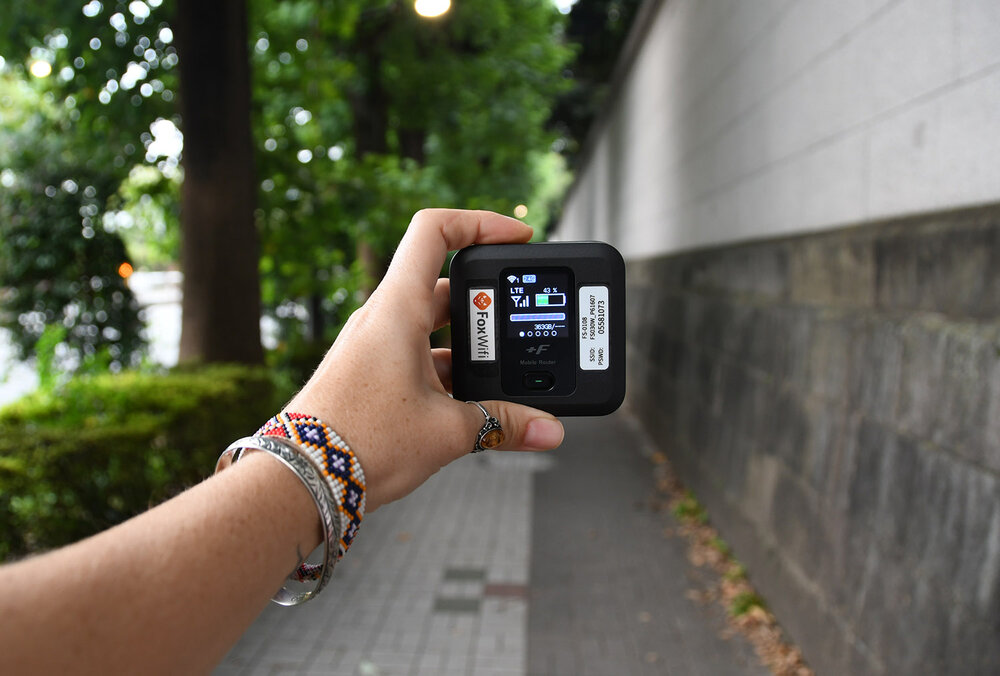
Staying connected to the Internet is very useful when traveling in Japan. And not just because you can post your pretty pictures to Instagram to make all your friends jealous
Having Internet connection will make your travels SO much easier when it comes to translating Japanese writing and getting directions for the notoriously confusing train and metro systems. Trust me, having translating and navigating abilities in Japan is an absolute LIFESAVER.
The two best ways to stay connected is with a SIM card or via a hotspot. The best option is going to totally depend on your needs and budget, and weve compared them here so you can choose the best one for you.
27. Take your shoes off

When entering guesthouses, homes, holy sites, and some stores, you will need to remove your shoes. This is typically indicated by floor that is different levels either raised or lowered once you enter.
Usually there are indoor slippers that you can wear once you remove your shoes. The exception to this is in rooms where the floor is tatami mats a delicate traditional flooring made of rice straw. These are common in traditional guesthouses and teahouses, inside which you can wear socks.
Also, some guesthouse have bathroom slippers. Yes, you read that right, shoes for the potty. Typically they will be sitting just inside the bathroom door and youll leave your indoor slippers outside of the bathroom.
28. Theme cafes are a big thing!
Japan is known for all things quirky, and this applies to restaurants and cafes. The famous Robot Restaurant, with its laser beams, giant robots and scantily clad performers, is an example of something you can only find in Japan. As is the equally famous Kawaii Monster Cafe, which is basically just a combination of all things rainbow and cute.
But the theme restaurants dont stop there, and its important to beware and do a little research before patronizing them. Some of these theme cafes have a dark side. For example, many of the animal cafes (hedgehog, owls, sheep, etc.) do not have a safe and healthy environment for the animals. Also, there are anecdotes of young waitresses being exploited in the infamous maid cafes.
And no matter which cafe you go to, just remember, youre not there for the food, which is usually sub-par. And its also worth noting, youre paying for the experience as well!
29. Convenience store culture
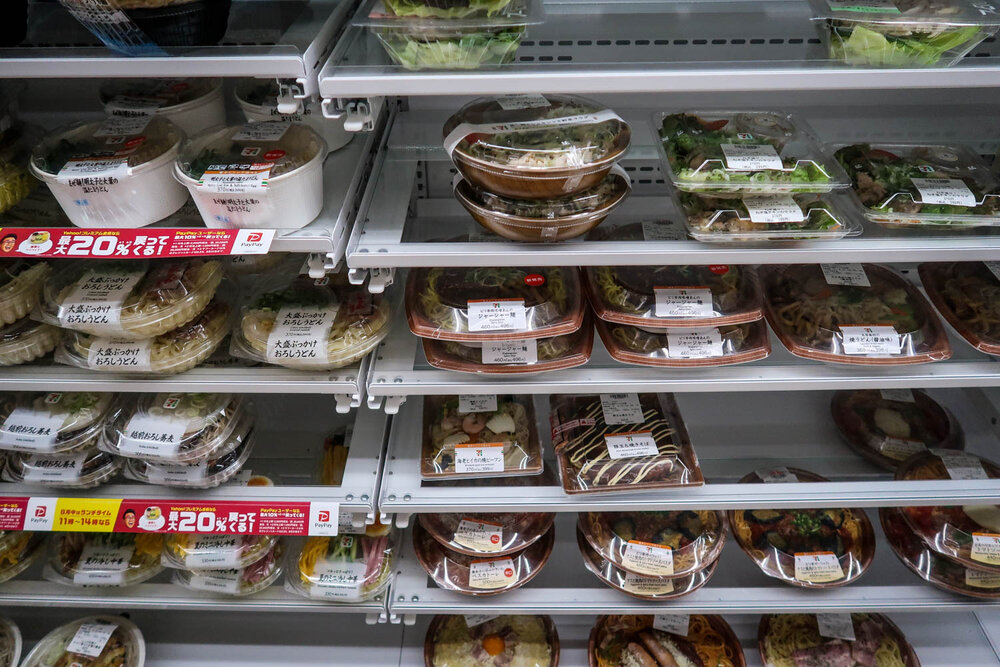
Convenience stores are big deal in Japan.
And the food options in Japanese convenience stores is much larger and less sketchy than in most other places around the world. I mean, I would NEVER get sushi from a convenience store in the US, but I definitely did just that in Japan. And it was good!
You can literally eat breakfast, lunch, and dinner (and all your snacks too!) from convenience stores. The most popular chains are 7-Eleven, Lawsons, and Family Mart, and you can find them on just about every city block. No joke.
I will say that at the end of the day, the food youll find while good is still processed, packaged food. Some people claim they would live off of convenience store food in Japan. I am not one of those people!
I did enjoy it in moderation, and loved being able to try some super quirky treats, like Sugar Butter Sand Tree Cookies, which are weirdly delicious and familiar-tasting!
30. Fresh fruits & veggies are few and far between

It might be good for some travelers to know that you should be prepared to go without a ton of fresh veggies and fruits for a while. We usually eat lots and lots of fresh vegetables and fruits, so we felt a bit heavy/bloated during our time in Japan.
Youll find some vegetables cooked or fried in your meals or a shredded cabbage salad on the side, but not too much more than that. And fresh fruit is pretty expensive, so its more of a treat than a typical snack.
We had been living in Bali for 3 months before our trip to Japan, where our daily diet consisted of giant fresh salads and smoothie bowls. Lets just say that Japan is a lot more heavy on the rice, noodles, meats and seafood than on the fresh veg!
If you dont eat that much fresh produce regularly, you might not notice too much of a difference.
Tip: Also, while convenience stores are great, and just that super convenient! I found it hard to find healthy snacking options. Next time I travel to Japan, Ill pack some dried fruit (not covered in sugar), nuts, protein bars, etc.
31. Know about the Suica and ICOCA Cards
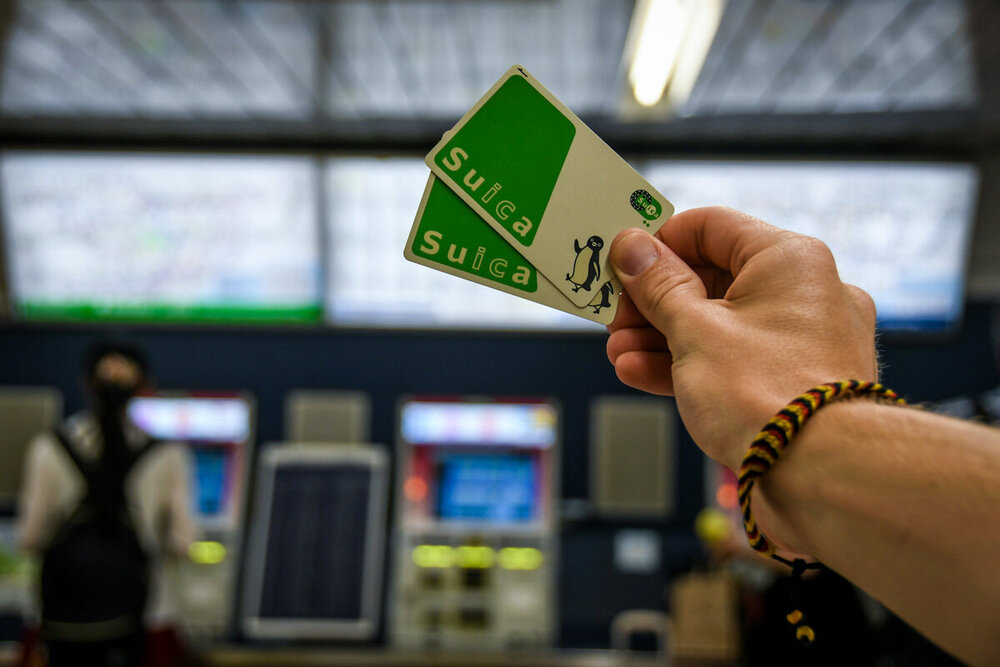
These are essentially the metro cards in Japan (Suica is for Tokyo and the surrounding area, and ICOCA is for Kansai region).
They will save you money on each trip, and are more convenient than having to purchase a ticket each time. I recently found out that you can get an app on your phone, which would be nicer than having a physical card!
But if you want a physical card, you can purchase the card from a ticket kiosk in most stations starting at 1,000 yen. There is a 500 yen deposit, but you can get this refunded once you are done traveling in that region at any major JR Station.
You can use your card for purchases in convenience stores, which is handy when you dont have cash. You cannot get the ICOCA card refunded outside of the Kansai Region, and likewise you cant get the Suica card refunded outside of the greater Tokyo Metro. However, both cards will work throughout Japan.
32. Pack light for Japan
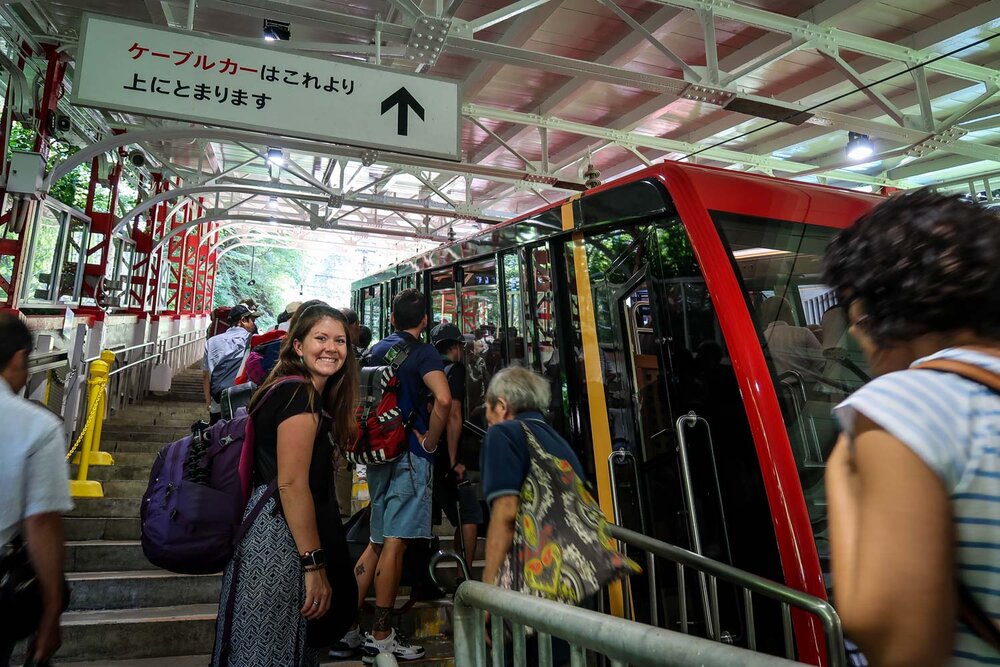
We actually broke this rule, as we had been living in Asia for a year and were in the midst of bringing all our stuff back to the US.
But trust me when I say that carrying big backpacks or suitcases through crowded metros, trains andintersections is NOT fun. We found a luggage transfer service that was able to send the luggage we didnt need from Osaka to our hotel in Tokyo and store it for us. It was super simple and cheap! Im sure there are more services out there, but it was a little hard to find when we were searching.
33. You cant see/do everything
This can be a hard one to come to terms with, especially when you see all sorts of posts and advice. It can honestly get overwhelming (been there!). Just know that youll need to narrow down and prioritize the things you really want to do.
If you dont get to everything you likely wont, there are ENDLESS cool things to do in Japan you can always come back for a second, third, seventh visit down the road.
34. Planning is your friend in Japan
We usually love to travel with a lot of room forflexibility. However, unless youve got a lot of time to travel around Japan, planning your route and accommodation in advance is going to help you maximize your time.
Add in some flexible time where you can just wander or relax, but our advice would be to come with a pretty solid plan (even if you dont usually travel this way).
35. Bring comfortable walking shoes
When people say youll be walking a lot in Japan, they aint lying! We walked an average of 10 miles (16 km) each day, so comfortable shoes are a MUST.
36. Cover charges at Izakayas
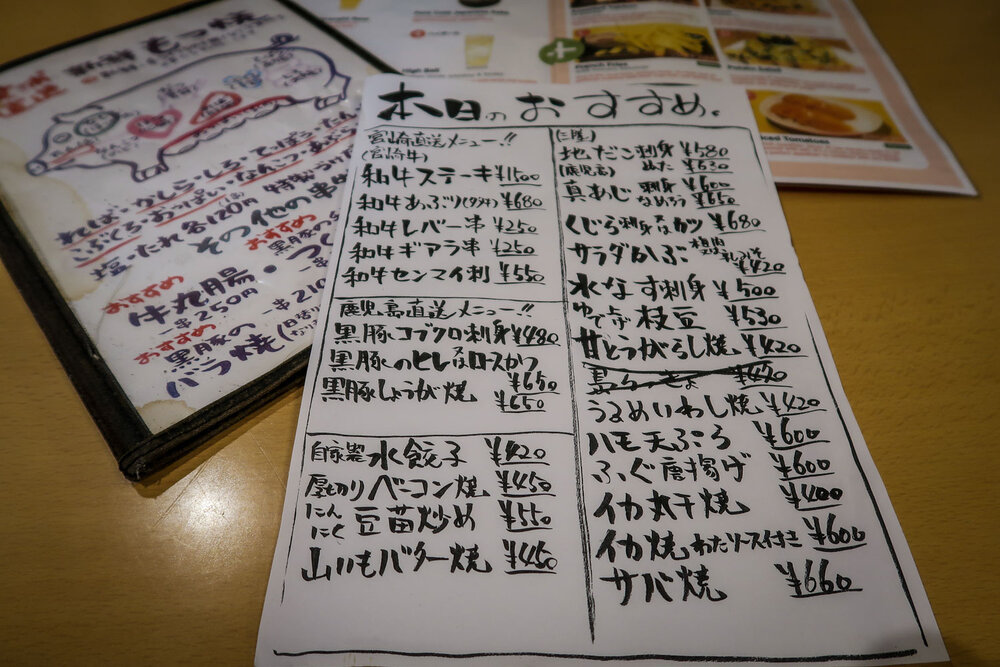
Even though youre not expected to pay gratuity in izakayas, its good to know that many establishments charge whats called a otshidai, or a cover charge. Sometimes youll be given a small (aka TINY!) dish, otshi, for which the charge is attributed on your bill. However, its really just an extra fee for the seat you are occupying.
Usually itll be between 200 - 500 yen. Its good to expect this so youre not confused when your final bill comes.
37. Splitting is usually a no-no
Sometimes when were traveling on a budget, we like to split one large meal. Often times, we dont feel the need to order two full entrees, plus, it cuts our food costs in half.
However, this is usually considered rude in Japan since seating is often limited and you are taking up a spot in the restaurant. So for instance, it would be frowned upon for two people to go into a ramen shop at a busy hour, and only order one bowl of soup. If one party doesnt feel like eating, it would be best to wait outside (I know, I know!).
An exception to this would be if you go at an off-hour, say 3 in the afternoon, when a restaurant is less busy. You can ask if its okay to split one meal. We did this once at a restaurant where they served large seafood dishes. The restaurant was pretty much empty in the middle of the afternoon and we just wanted a light meal, not 2 huge entrees. They said it was fine, but I wouldnt have done this at a busy time of day.
Note: When we say this, we dont mean you cant try each others meals we did this ALL the time and find it the best way to taste as many dishes as possible.
38. Be prepared for a lot of cigarette smoke
Smoking is allowed inside many restaurants and bars, and I guess I forgot what its like to be in a small space with others smoking. Just another thing to be aware of!
Fun Facts about Japan
This is just for fun! Ever wonder how many islands actually make up Japan or where ramen comes from? Weve got those answers as well as some other fun facts about Japan.
38. Japan is made up of more than 6,800 islands
Crazy huh?! The archipelago of Japan is actually the 4th largest island nation in the world.
While many people know of Hokkaido, Japans northernmost island, and Honshu, the most populous island which is home to Tokyo and Osaka, many of the other islands are forgotten.
Though there are thousands of islands, only about 430 of them are populated.
40. Yukata vs. Kimono
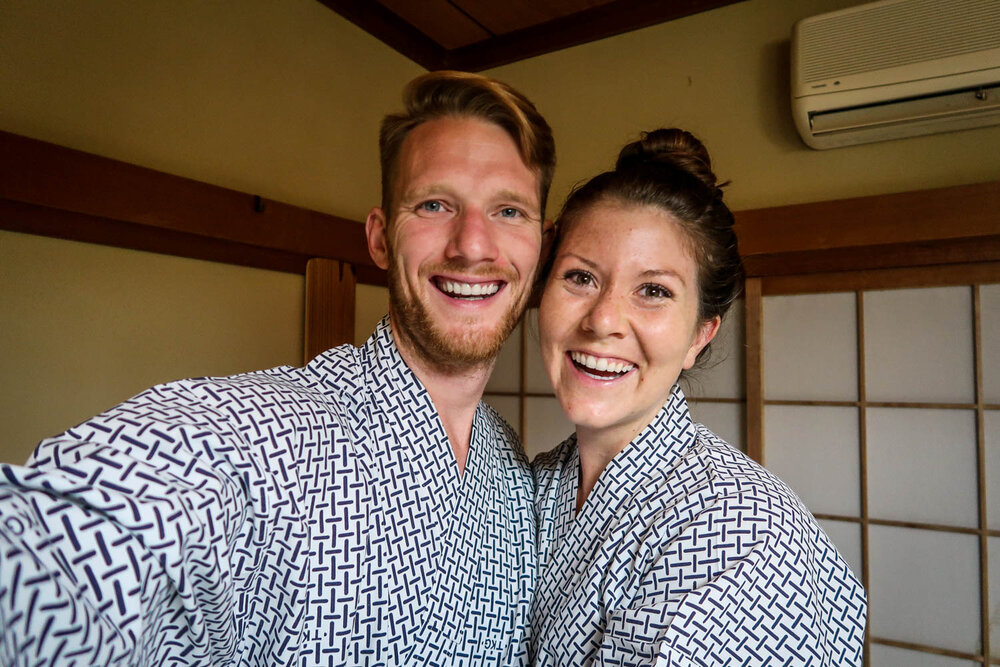
There are a few distinct differences when it comes to fabric, occasion and season. Yukata is commonly made out of cotton and typically only have one collar, making them a lighter attire. Kimono are usually made of silk and have two collars, making them warmer and heavier.
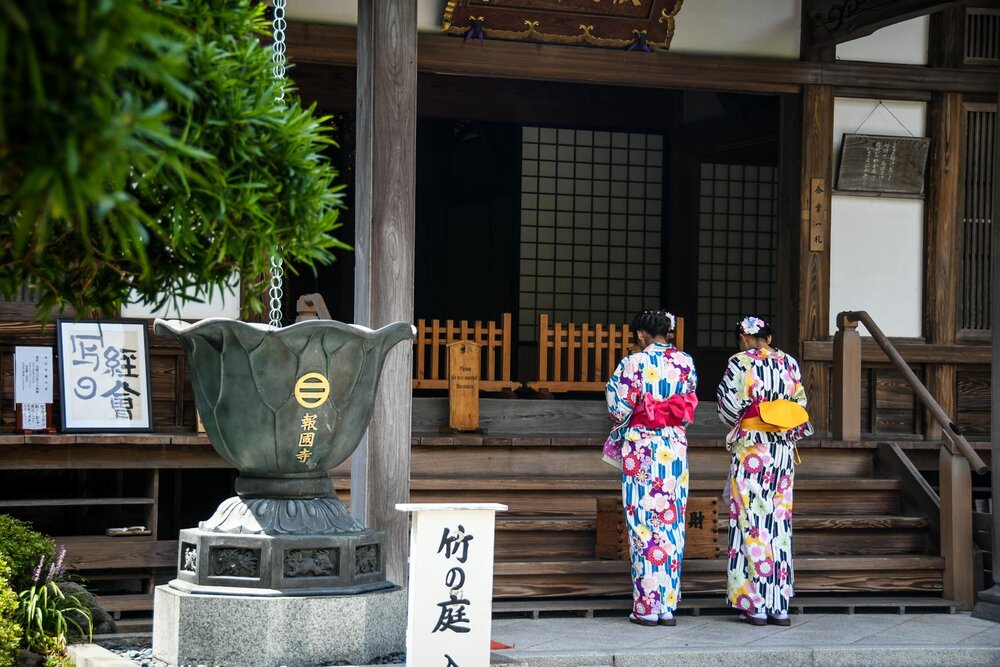
Yukata and kimono are worn for different occasions. Kimono is the more formal attire and is worn for weddings and graduations. Yakata is less formal and is usually worn around the house or outside during the hot summer months.
Guesthouses in Japan typically have a yukata in your room for you to wear around the building. If you would like to rent a kimono for the day, you can find fitters in most cities.
Important to know: Whether youre wearing a kimono or a yukata, its important to know one thing the left lapel must be worn over the right. This is because deceased people are dressed in a kimono with the right side over left for funeral ceremonies.
41. Many Japanese people sleep on the floor
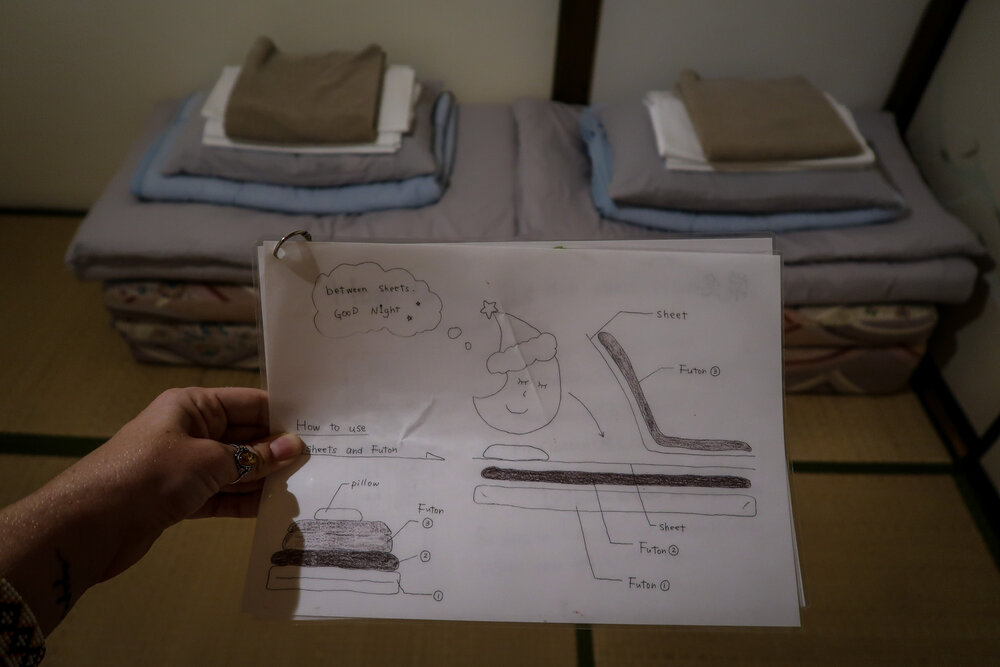
Traditionally, Japanese people dont sleep on beds, as is common in the West. Instead, they sleep on futons.
No, this is not the same kind of futon (a.k.a. couch that turns into a bed) you used for sleepovers in your parents basement growing up
Japanese futons are essentially a very thick blanket that serves as a mattress, paired with a duvet blanket and a pillow. All three items can be folded up and stored in the closet to save valuable space during the daytime.
If you plan to stay in a ryokan or smaller guesthouse in Japan, you should expect to sleep on a futon. Typically more modern hotels will have Western-style beds.
Good to know: Traditional Japanese pillows are stuffed with beans, and you may encounter these a few times on your travels in Japan. They are much more stiff and lumpy than pillows you may be used to, so if youre worried about it, you may want to pack a travel pillow.
42. Some famous Japanese dishes come from a time of poverty
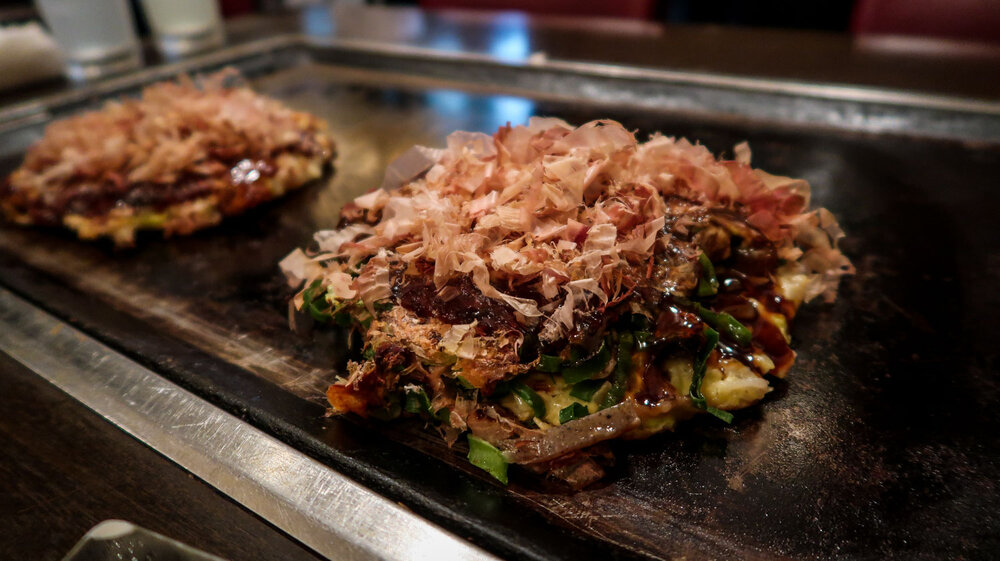
Food shortages after World War II meant rice was scarce. US entities brought in wheat flour, which led to the creation of fried dishes such as kushikatsu, karaage, okonomiyaki, and takoyaki. Ramen was also increasingly popular during this time. This was a cheap way for people to fill up even during times of food shortage.
43. Theres a market for Luxury Food
This might sound ridiculous, but there is a trend of luxury food in Japan, and wealthy people pay big dollars for rare items like square watermelon and specialty grapes and cantaloupe, some of these bringing in tens of thousands of dollars!
So what do people do with these so-called luxury foods? Well, they typically dont even eat it themselves, but instead give it as a gift. Umm, Id prefer a plane ticket, thank you very much!
44. Japan consumes more fish than any other country

In fact, 7.5 billion tons of fish are eaten per year, which is nearly 10 percent of the fish caught in the world.
45. Ramen and Sushi are NOT originally Japanese
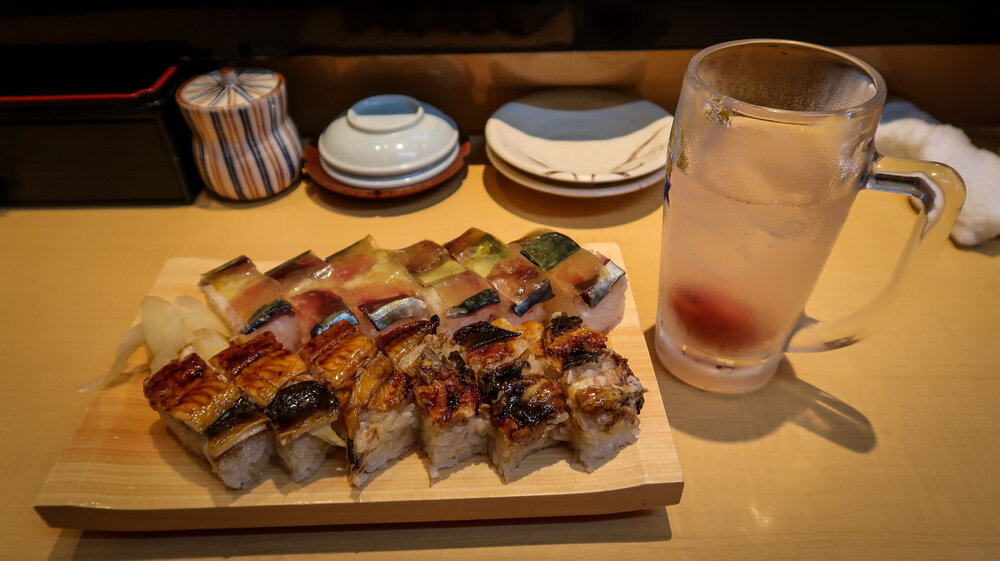
Now before I start any wars with that statement, let me clarify by saying that ramen and sushi, as we think of them today, are totally Japanese. However, many people may be surprised to know that these famous dishes actually came from other countries.
Ramen came from Chinese settlers and sushi was an invention of working-class people in Southeast Asia as a way to keep fish fresh for longer. Over time, Japanese people have put their own flavors and spin on these dishes to make them uniquely their own. But it is important to recognize that the concept came from elsewhere.
Sushi and ramen are just two examples many other dishes that we think of as Japanese came from other regions as well.
46. Sumo Wrestling
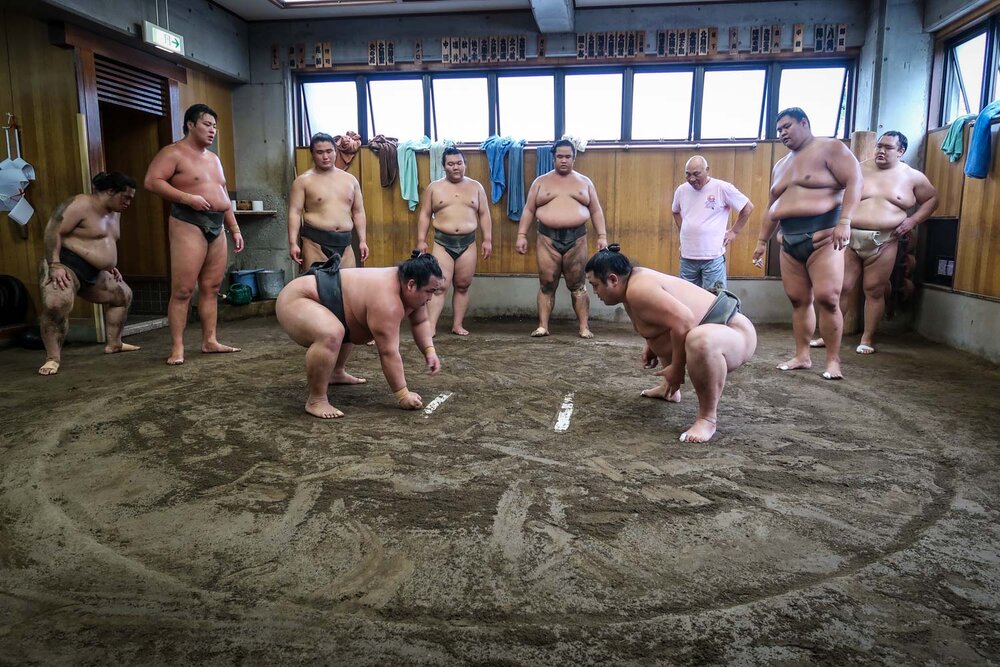
Sumo wrestling has origins dating back over 1500 years and is connected to the Shinto religion. Wrestlers, also known as rikishi, are required to live together in a communal training stable. They practice everyday and live a very traditional lifestyle.
While sumo is of Japanese origin, many sumo wrestlers are not from Japan. Some of the highest ranking rikishi are from Mongolia, Georgia and Bulgaria.
47. Salarymen
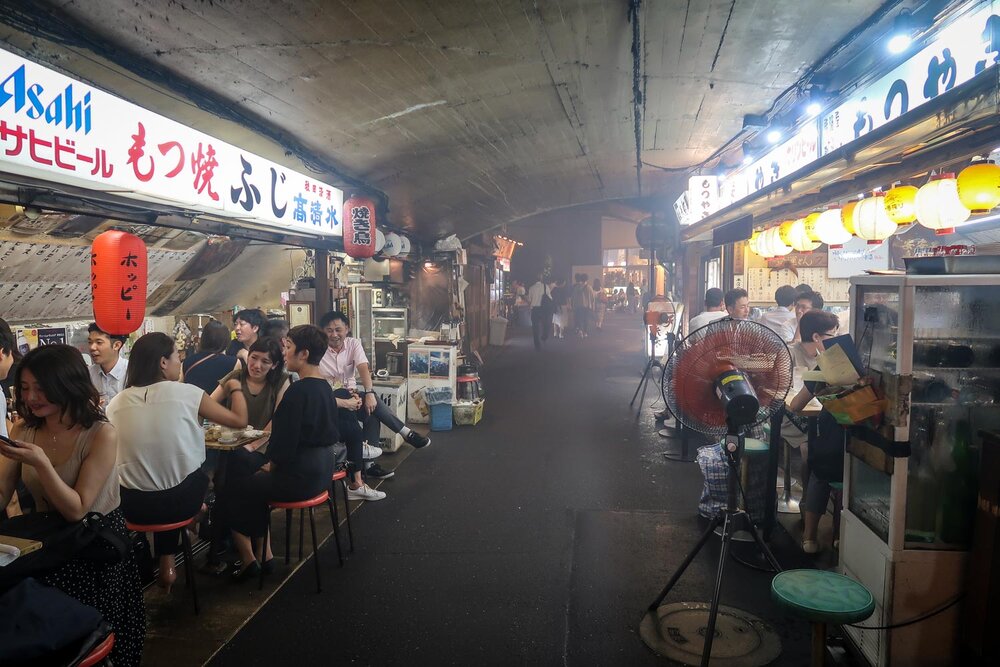
Go to any city train station around rush hour and youll quickly notice a sea of men dressed in essentially the same thing drab black dress pants and white button-down shirts (pale blue if theyre feeling spicy!) and a jacket in the colder months.
Salarymen is the term used to describe white-collar workers. In Japan, its very common for young men (and women) to get a job out of university and stick with that company throughout their entire career.
Another characteristic of the salaryman is that they work long hours. In some Asian cultures, putting in long hours is seen as showing loyalty and productivity. There is often pressure to go out drinking after work hours, making it a difficult work-life balance for many salarymen. This has come into scrutiny in recent years, as high rates of suicide or health issues have come into the public eye.
You may also like
We want to hear from you!
Do you have any more fun facts about Japan? Which fact or travel tip was most helpful or interesting? Let us know in the comments below!